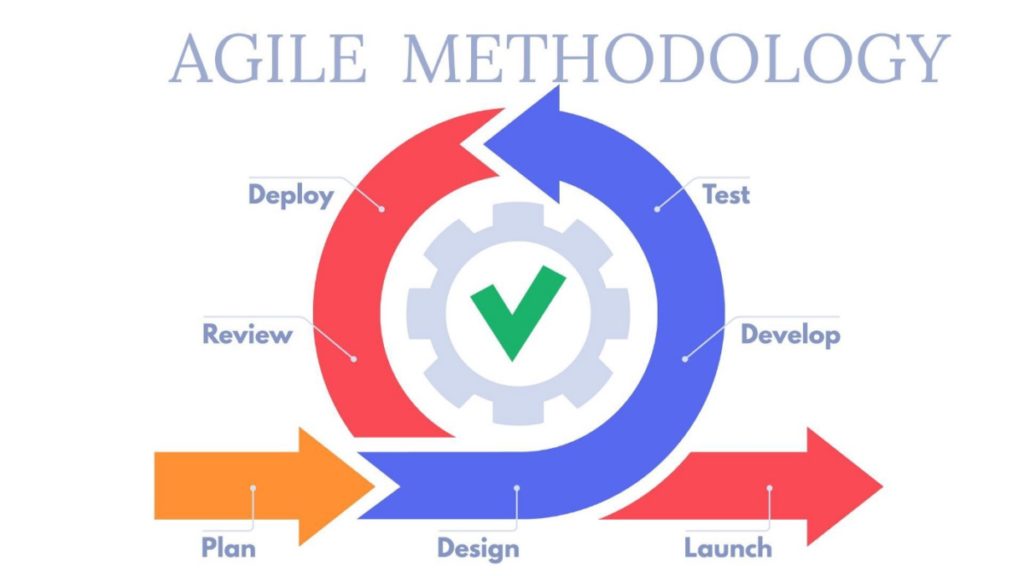Agile Methodology
Agile methodology is a project management strategy that is mostly implemented in the software development industry. Where self-organized and cross-functional teams collaborate with their clients to develop needs and solutions.
Agile is a collection of ideas focused on adaptability and flexibility. Agile strives to improve responsiveness to changing business requirements. By focusing on empowering teams to create measurable improvements. In this article, we will focus on agile testing methodologies. So let’s get dive into detail.
Brief Introduction of Agile Testing Methodologies
To improve product testing procedures, agile methodologies for software design have been introduced. The agile testing technique is the acronym for this software testing approach. It is compatible with the Agile methodology’s iterative approach to software development. Because it focuses on the customer’s and the test team’s progressive evolution of a product’s requirements. The development process is then linked with these criteria at each iteration.
Normally, test procedures are carried out in sequential order. However, with Agile testing, the process is carried out constantly. The agile testing methodology procedure starts right at the start of the project. While working as part of the development team. Both developers and testers have the same aim in mind when they collaborate: to provide a high-quality product.
Benefits of Agile Testing Methodologies
The following are some of the advantages of using an agile testing approach:
- Agile testing decreases the amount of documentation required
- Agile Testing Methodology is cost-effective and time-saving
- It is responsive to changes and is versatile
- Through daily meetings, concerns can be better determined
- It gives you a chance to get regular feedback from your customers
Principles of Agile Testing Methodologies
When it comes to agile testing approaches, there are numerous principles to follow to reach the end goal:
- Agile teams make testing a habit and conduct it frequently to guarantee that the entire project and product development remain on track.
- Agile tests provide constant feedback as they are being run.
- In contrast to the traditional testing strategy, where testing is solely the responsibility of the testing team throughout the software development life cycle.
- To test the product, developers, testers, and business analysts collaborate.
- Agile testing emphasizes the creation of simple, clean code.
- Less documentation is used by the agile team. They frequently refer to a reusable checklist.
- Testing is usually done during the installation phase.
Agile Testing Methodologies
The following sections go through the types of Agile testing methodologies:
1. Exploratory Testing
Test design and execution go hand in hand in this form of testing. Exploratory testing focuses on the software’s operation rather than thorough documentation. Processes and tools are less important than individuals and their interactions. Customer cooperation is more valuable than contract negotiations. Exploratory testing is more flexible to change than traditional testing. In this test, testers examine an application to determine its functionality. Testers try to comprehend the application before developing and executing test techniques based on the empirical results.
2. Behavior Driven Development (BDD)
BDD promotes project stakeholders to interact so that members are aware of all features before the development process. BDD’s “scenarios” are created by testers, developers, and business analysts. This makes example-based communication easier.
The situations follow a certain format known as Gherkin Given/When/Then. They contain data on how a function behaves in various scenarios and with various input parameters. Because they include both specs and automated test inputs, these are referred regarded as “executable specifications.”
3. Acceptance Test-Driven Development (ATDD)
ATDD concentrates on involving team members from various backgrounds, such as customers, developers, and testers. Three Amigos meetings are held to build acceptance tests that take into account the perspectives of customers, developers, and testers. The customer is concerned with the problem to solve, development is concerned.
Concerned with how to solve the problem, and testing is concerned with what might go wrong. Acceptance tests present the user’s perspective and describe how the system works. It also aids in ensuring that the system is functioning properly. Acceptance testing is sometimes automated.
4. Session-Based Tests
This technique is similar to exploratory testing, but it is more structured and ensures that the program is thoroughly tested. Test documentation and test reports can be included to help testers know what to test and document what they find throughout a test.
Each session concludes with a personalized debrief between the testers and the appropriate developers, scrum masters, or managers, which covers the TEST points:
- (Past): What was accomplished during the test? (Past)
- (Results): What the tester found out or was given (results)
- (Obstacles): Any issues that arose during the process
- (Outlook): There are a few more things to check out (Outlook)
- (Feelings): What the tester thinks about the parts of the product they’re evaluating
Bottom Line
Agile testing not only allows for the early detection of bugs but also lowers the cost of errors by allowing them to be fixed sooner. This method also emphasizes customer service by delivering a high-quality solution as quickly as possible. The agile approach to software testing necessitates testing throughout the software development lifecycle. It is for this reason that agile testing approaches are used.
